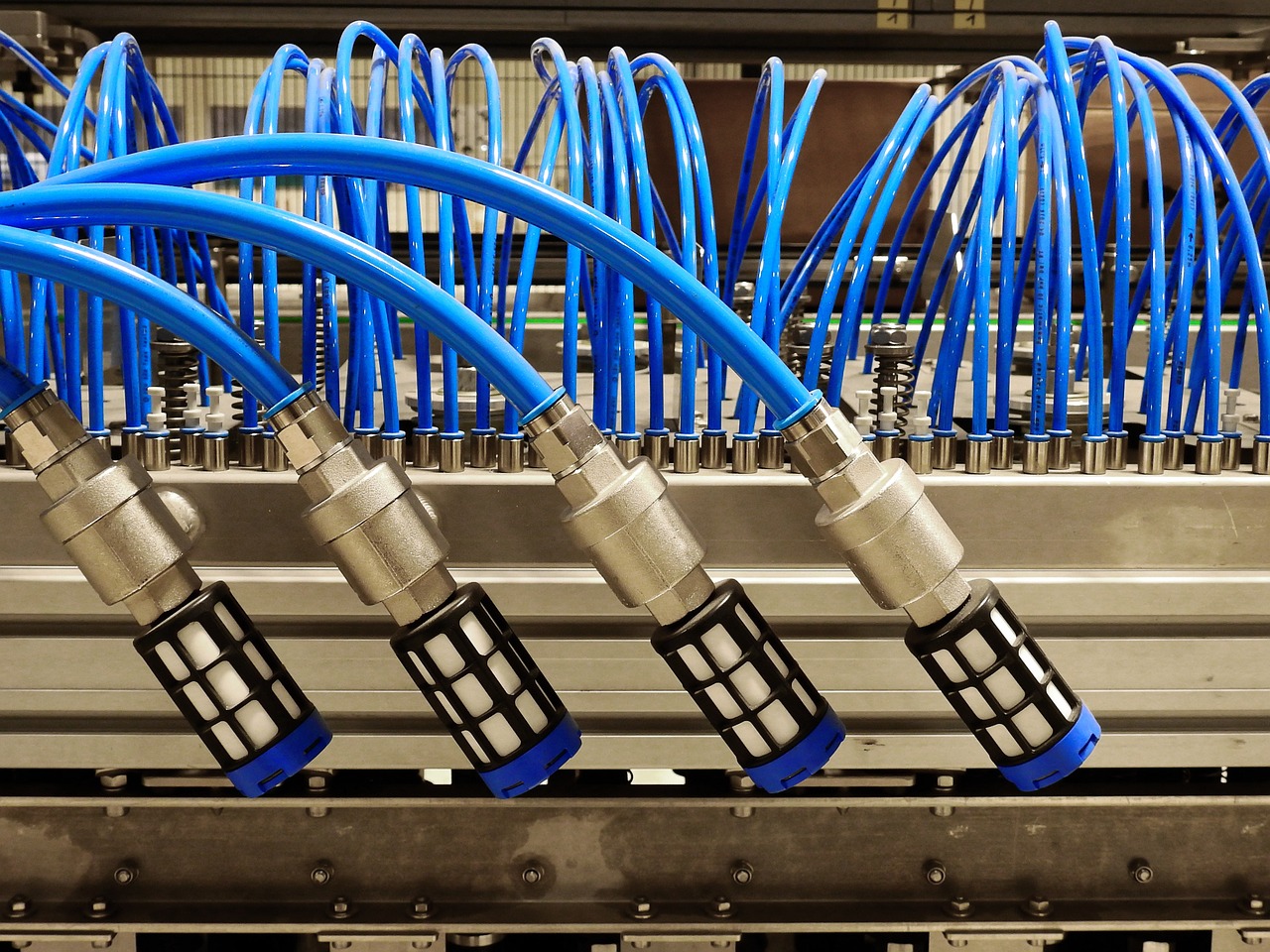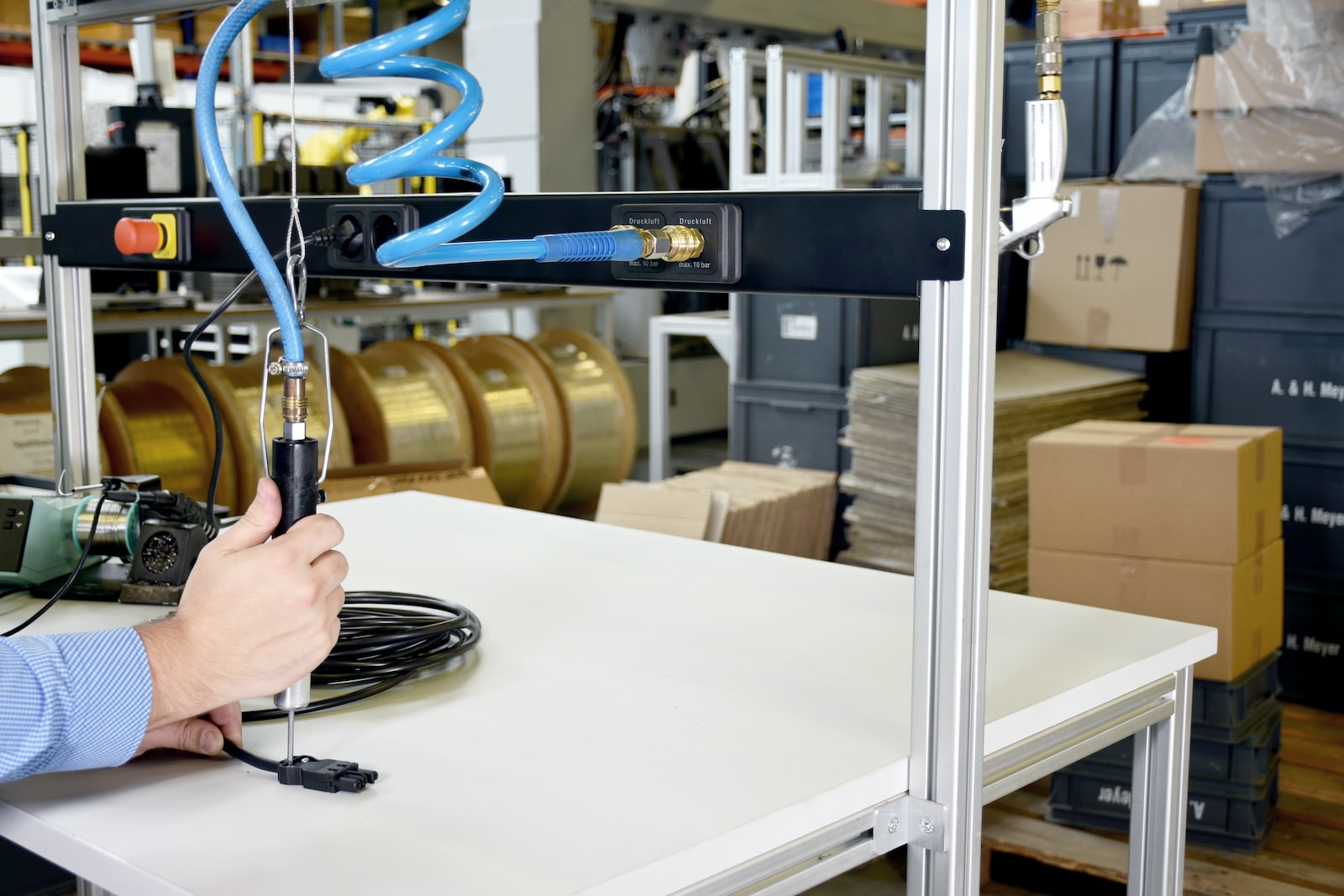Pneumatics and hydraulics are two technological systems widely used in various areas of industry and construction. Pneumatics is a system based on the use of compressed air to move and control the movements of mechanical elements. Hydraulics is a system based on the use of hydraulic fluid to move and control the movements of mechanical elements. Both systems are very useful in many applications, but there are some differences between them that are important to know in order to choose the right technology in a given situation.
Definition of pneumatics and hydraulics
Pneumatics is a system based on the use of compressed air to move and control the movements of mechanical elements. This is a technology designed to replace or complement conventional drive mechanisms such as internal combustion engines or electric motors. Pneumatics is widely used in many fields such as the automotive, aviation, machinery and electrical industries.
The main tasks of pneumatics are:
- Move mechanical elements such as pistons, valves and levers using compressed air.
- Control and regulate the speed and force of movement of mechanical elements using special pneumatic valves.
- Enabling the automation of production processes through the use of pneumatic control systems.
Hydraulics is a system based on the use of hydraulic fluid to move and control the movements of mechanical elements. This is a technology designed to replace or complement conventional drive mechanisms such as internal combustion engines or electric motors. Hydraulics are used in many areas such as machinery, construction, automotive and petrochemical industries
The main tasks of hydraulics are:
- Move mechanical elements such as pistons, valves or levers using hydraulic fluid.
- Control and regulate the speed and force of movement of mechanical elements using special hydraulic valves.
- Enabling the automation of production processes through the use of hydraulic control systems.
Differences between pneumatics and hydraulics
Pneumatics and hydraulics are two technologies widely used in many areas of industry and construction. Although both systems are used to move and control the movements of mechanical elements, there are some differences between them that are important to know in order to choose the appropriate technology for a particular situation.
The main differences between pneumatics and hydraulics are:
- Type of medium used: Pneumatics is based on the use of compressed air as a means to move mechanical elements. In hydraulics, however, hydraulic fluid is used as a medium to move mechanical components.
- How it works: Pneumatics works by moving compressed air through special pneumatic valves and pneumatic tubes and lines. Hydraulics, on the other hand, works by moving hydraulic fluid through special hydraulic valves and hydraulic tubes and lines.
- Control and control options: Pneumatics allows precise control and control of the movements of mechanical elements through special pneumatic valves and appropriately selected pneumatic elements. Hydraulics, on the other hand, allows precise control and control of the movements of mechanical elements through special hydraulic valves and appropriately selected hydraulic elements.
- Application in various areas: Pneumatics is used in various areas, such as the automotive, aviation, machinery and electrical industries. However, hydraulics is widely used in many fields such as machinery, construction, automobiles, and petrochemical industries.
Pneumatics and hydraulics in practice
Pneumatics and hydraulics are widely used in many areas of industry and construction and their use can bring many advantages in terms of automating production processes and allowing precise control and control of the movements of mechanical elements. Below you will find examples of the application of pneumatics and hydraulics in different areas, as well as a description of their advantages and disadvantages.

Industry: Pneumatics is widely used in industry to automate production processes and precisely control the movements of mechanical elements. The advantages of pneumatics in industry include:
- Ability to move mechanical elements with high speed and precision.
- Ability to move mechanical elements in any direction.
- Ability to move mechanical elements with great force.
However, hydraulics are widely used in industry to automate production processes and precisely control the movements of mechanical elements. The benefits of hydraulics in industry include:
- Ability to move mechanical elements with great force.
- Ability to move mechanical elements with high speed and precision.
- Ability to move mechanical elements in any direction.
The use of pneumatics and hydraulics in combination
Pneumatics and hydraulics can be used together in hybrid systems that combine the advantages of both technologies. This combination allows fast and precise movements of mechanical elements with great force and precise control of movements.
Examples of combined pneumatics and hydraulics applications:
- Agricultural machinery: In agricultural machinery, pneumatics and hydraulics are often used together to automate production processes and precisely control the movements of mechanical components.
- Construction machines: In construction machines, pneumatics and hydraulics are often used together to automate production processes and precisely control the movements of mechanical components.
Industrial pneumatics: a compendium of knowledge for beginners and others
Advantages of combining pneumatics and hydraulics:
- Ability to move mechanical elements quickly and accurately with great force.
- Ability to precisely direct and control the movements of mechanical elements.
- Ability to increase the reliability and durability of hybrid systems.
Pneumatics and hydraulics of the future
In the future, the development of pneumatics and hydraulics is expected to focus on the search for increasingly efficient, reliable and environmentally friendly solutions. Current trends and innovations include:
- Expansion of electrical screw networks: Electric screw networks are modern pneumatic systems in which special electromagnets are used to move mechanical elements instead of classic screws and pistons. Electric screw networks allow high forces and speeds to be achieved while maintaining high accuracy and precision.
- High pressure pneumatics: High pressure pneumatics is a pneumatic system in which the working pressure is greater than 8 bar. High pressure pneumatics allow high forces and speeds with small element sizes and low energy consumption.
- Forced pneumatic systems: Forced pneumatic systems are modern pneumatic systems that use special electromagnets to generate pressure instead of conventional compressors. These systems allow for high forces and speeds while maintaining a small element size and low power consumption.
- Forced hydraulic systems: Forced hydraulic systems are modern hydraulic systems that use special electromagnets to generate pressure instead of conventional pumps. These systems allow high forces and speeds with small element sizes and low wear.
Energy efficiency and greenhouse gas emissions
In recent years, there has been an increasing emphasis on energy efficiency and reducing greenhouse gas emissions. In this context, reducing energy consumption in industry and construction is also an important element. Pneumatics and hydraulics represent an important source of energy consumption in many industries, which is why more and more attention is being paid to ways of optimizing energy costs in this area.

One way to reduce energy costs in pneumatic systems is to use efficient compressors and optimize their operation. It is also possible to use alternative energy sources to drive compressors, such as renewable energy sources or waste heat. Another important element in hydraulic systems is the use of efficient pumps and the optimization of their operation. It is also possible to use hydraulic accumulators for energy storage and the use of pressure return systems.
There are also funding programs and initiatives in Europe that aim to promote energy efficiency in industry
Operating and investment costs of pneumatics and hydraulics
Pneumatics and hydraulics are important elements of many industrial and construction systems and their use depends on many factors, such as: B. the type of device operated, the operating conditions, the requirements for accuracy and speed of operation and the costs. It is difficult to answer the question of which application is more expensive because it largely depends on the specific conditions and circumstances.
In general, investment costs in pneumatics are lower compared to hydraulics because they require smaller components and less complex systems. However, for large, heavy devices that require high levels of force and power, hydraulics can be more economical because they can transmit greater forces with less energy expenditure.
In terms of operational costs, both solutions can have similar costs if they are properly designed and managed. It is also important to properly select and maintain pneumatic and hydraulic components to ensure their performance and durability. In case of malfunction or lack of adequate maintenance, operating costs can increase significantly.
The question of which application is more expensive is difficult to answer because it largely depends on individual requirements and circumstances. Both pneumatics and hydraulics can be cost effective in a wide range of situations and applications and the decision to choose the appropriate solution must be made taking into account all relevant factors such as performance, strength, precision, operating speed and conditions. operating costs, capital and operating costs, and availability and compatibility of components and devices. The use of hybrid systems that combine the advantages of pneumatics and hydraulics in a single system is also conceivable.

























































